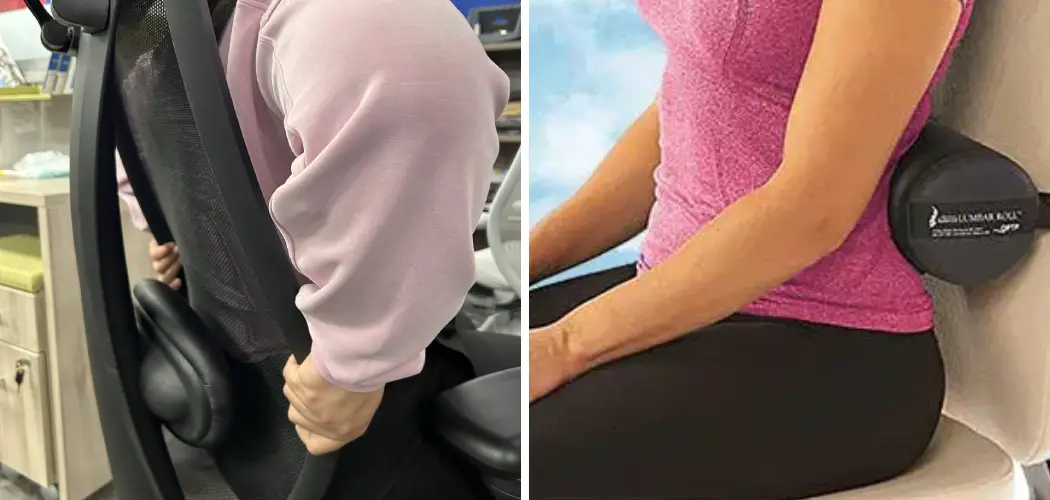Are you feeling constant stiffness and aching in your lower back? You’re not alone — the majority of people experience chronic discomfort in this area due to poor posture, sitting for extended periods of time, or certain medical conditions. Fortunately, there are plenty of ways to alleviate this pain without spending money on costly treatments; one proven method is using lumbar support.
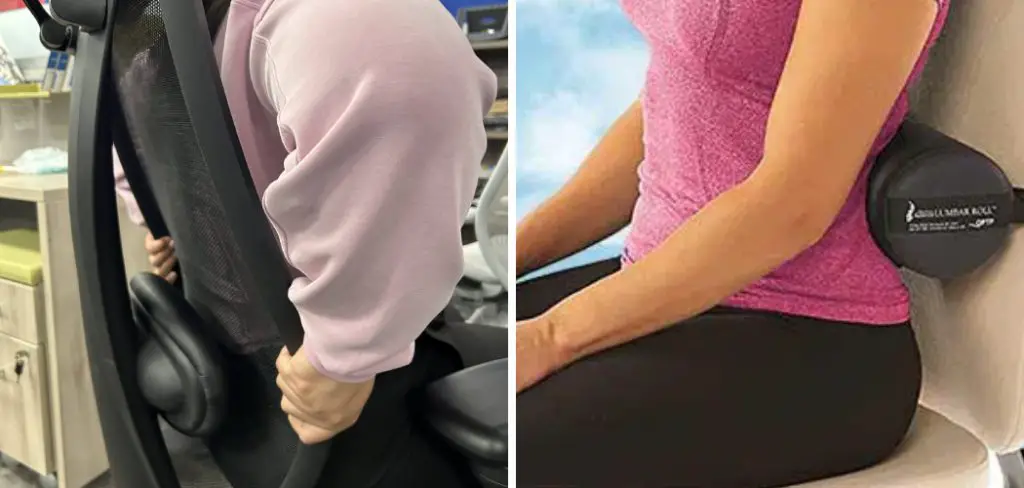
Positioning the right kind of lumbar support properly can relieve pressure from muscular stress and help reduce aches, pains, tension headaches, and more! In this blog post on how to position lumbar support, we’ll dive into the details of how to properly position lumbar support for maximum comfort and wellness benefits.
Why is Lumbar Support Important?
Before we get into the specifics of how to position lumbar support, let’s first understand why it is so crucial. Lumbar support helps maintain the natural curve of your spine and supports your lower back muscles, reducing strain and tension in this area.
Poor posture, especially when sitting for a prolonged period, can lead to slouching and loss of the natural curve in your spine. This can cause muscle imbalances, leading to pain and discomfort in your lower back.
Needed Tools and Materials
Before learning about the correct positioning of lumbar support, you’ll need to gather a few basic tools and materials. These include:
- A Comfortable Chair With Adjustable Lumbar Support or an Additional Lumbar Pillow.
- A Small Towel or Cushion for Added Padding.
- Optional: a Backrest or Seat Cushion for Extra Support.
10 Step-by-step Guidelines on How to Position Lumbar Support
Step 1: Find the Right Chair
Whether you’re working from home or in an office, choosing the right chair is crucial for proper lumbar support. Look for a chair with adjustable lumbar support or one that comes with an additional lumbar pillow. It should have a sturdy frame, adjustable height and backrest, and comfortable armrests. You can also opt for a backrest or seat cushion for extra support.
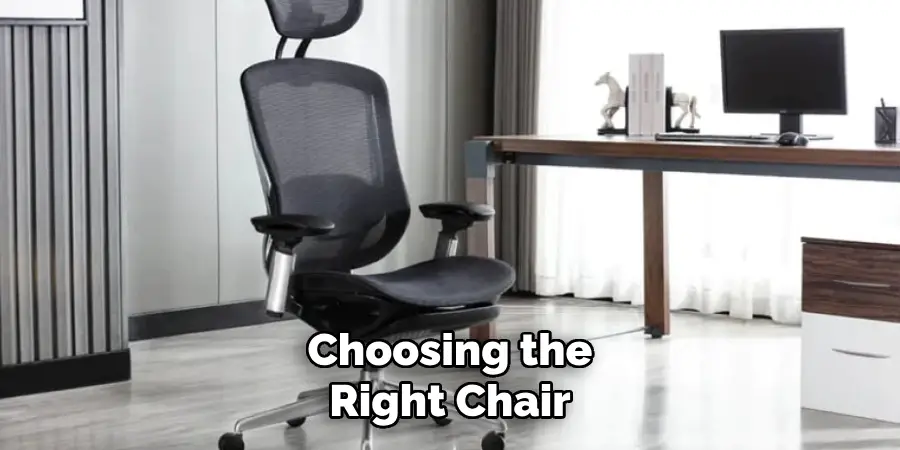
Step 2: Sit All the Way Back
When sitting down, make sure to sit all the way back in your chair. Your glutes (butt muscles) should be touching the back of the seat, and your feet should be flat on the ground. This will help maintain proper posture and keep your spine in its natural curve.
It also provides a stable base for your lumbar support to rest against. It’s tempting to slouch or lean forward, but this can put pressure on your lower back and cause discomfort.
Step 3: Adjust the Height of Your Chair
Adjust the height of your chair so that your feet are flat on the ground, and your knees are at a 90-degree angle. This will help distribute your weight evenly and prevent any strain on your lower back.
But make sure not to sit too low or too high, as this can affect the positioning of your lumbar support. You can also use a footrest if your feet do not reach the ground. You can check for a proper sitting position by aligning your ears, shoulders, and hips in a straight line.
Step 4: Place Your Lumbar Support
Place your lumbar support (whether it’s an adjustable cushion or a rolled-up towel) in the curve of your lower back. The top of the support should be aligned with the bottom of your ribcage, and the bottom should align with your hip bones. This will ensure that the lumbar support fits snugly in the natural curve of your spine.
Step 5: Mind Your Posture
It’s essential to maintain good posture while sitting, even with lumbar support. Keep your shoulders relaxed, and make sure not to slouch or lean forward. Your back should be straight, and your hips should be aligned with your spine.
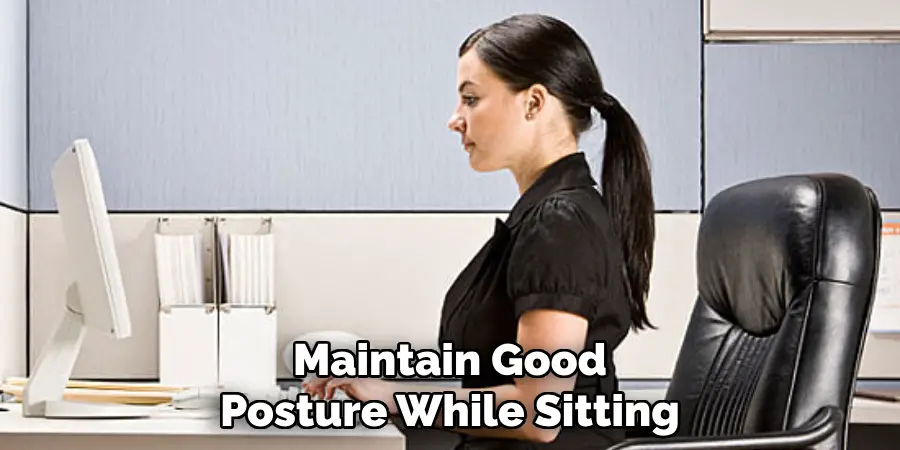
Use your lumbar support to help maintain this posture. Otherwise, you may experience more discomfort and pain in your lower back. This step may take some practice, but it’s worth the effort for long-term benefits.
Step 6: Add Extra Padding
If your lumbar support feels uncomfortable or too firm, you can add an extra layer of padding by using a small towel or cushion. This will provide additional cushioning and support for your lower back and make sitting more comfortable. It’s essential to adjust the extra padding so that it doesn’t interfere with the positioning of your lumbar support.
Step 7: Take Breaks and Stretch
Even with proper lumbar support, sitting for an extended period can cause strain on your lower back. It’s essential to take breaks every hour or so and stretch your muscles.

Stand up, walk around, and do some simple stretches to help release tension and reduce discomfort in your lower back. You can also switch between sitting and standing throughout the day or invest in a standing desk. It’s crucial to find a balance between sitting and moving for optimal back health.
Step 8: Consider Your Workstation Setup
Your workstation setup can also play a significant role in your comfort while sitting. Make sure your computer screen is at eye level, and your arms are at a comfortable angle when typing. This will help maintain proper posture and reduce strain on your neck, shoulders, and upper back. You can also use an ergonomic keyboard and mouse for added comfort.
Step 9: Be Mindful of Your Body’s Reactions
While positioning your lumbar support, be mindful of how your body reacts to the changes. If you feel more discomfort or pain, adjust the cushion or take a short break to stretch.
Everyone’s body is different, so it’s essential to find the right positioning and level of support that works for you. If you have any pre-existing medical conditions, consult with a healthcare professional before making changes to your lumbar support.
Step 10: Listen to Your Body
Lastly, always listen to your body and make adjustments accordingly. If you feel discomfort or pain in your lower back while sitting, it’s a sign that something isn’t right.
Make sure not to ignore these signals and make necessary changes to your posture or lumbar support. With time and practice, you’ll find the perfect positioning that works for you and provides maximum comfort. However, remember to take breaks and stretch regularly to prevent muscle imbalances and pain in the long run.
Following these guidelines on how to position lumbar support correctly can greatly improve your comfort and reduce strain on your lower back. It’s essential to practice good posture and take breaks throughout the day to keep your muscles healthy and pain-free. Remember, prevention is always better than cure, so make sure to prioritize your spinal health while working or sitting for extended periods.
Frequently Asked Questions
Q1: How Do I Know if My Lumbar Support is Positioned Correctly?
A1: Your lumbar support should be placed in the natural curve of your lower back, with the top aligned with the bottom of your ribcage and the bottom aligned with your hip bones. You should also feel comfortable and supported while maintaining good posture. If you feel any discomfort or pain, adjust the positioning of your support.
Q2: Can I Use a Rolled-up Towel as Lumbar Support?
A2: Yes, a rolled-up towel can provide temporary lumbar support. However, it’s essential to find a more permanent solution that fits your body and provides proper support. You can try using an adjustable lumbar cushion or consult with a healthcare professional for recommendations.
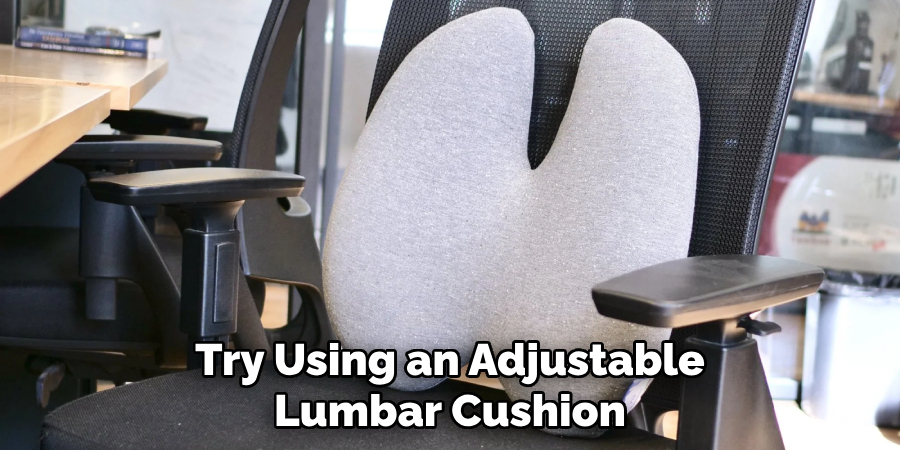
Q3: How Often Should I Take Breaks and Stretch While Sitting?
A3: It’s recommended to take breaks every hour or so and stretch your muscles. You can also switch between sitting and standing throughout the day, if possible, to prevent strain on your lower back. Listen to your body’s signals and take breaks as needed.
Q4: Can I Use My Lumbar Support While Driving?
A4: Yes, you can use your lumbar support while driving to maintain proper posture and reduce strain on your lower back. Make sure to adjust the support according to your seat’s position and take breaks when needed. Overall, it’s crucial to prioritize your spinal health while driving long distances.
Conclusion
In conclusion, lumbar support can help to position your back and hips correctly while sitting for long periods of time. Make sure you are consulting with a medical professional for further advice on the exact type of positioning that best suits your needs and level of comfort.
Furthermore on how to position lumbar support, if you do not have access to lumbar support products, other solutions such as rolled towels, blankets, or pilates balls may work as well. Ultimately, proper positioning in any posture is key to avoiding neck and back pain over prolonged periods of time.
Being proactive and taking the necessary steps to ensure proper body mechanics is important for both short-term and long-term health. Try implementing these tips today and see how better body positioning affects you!

